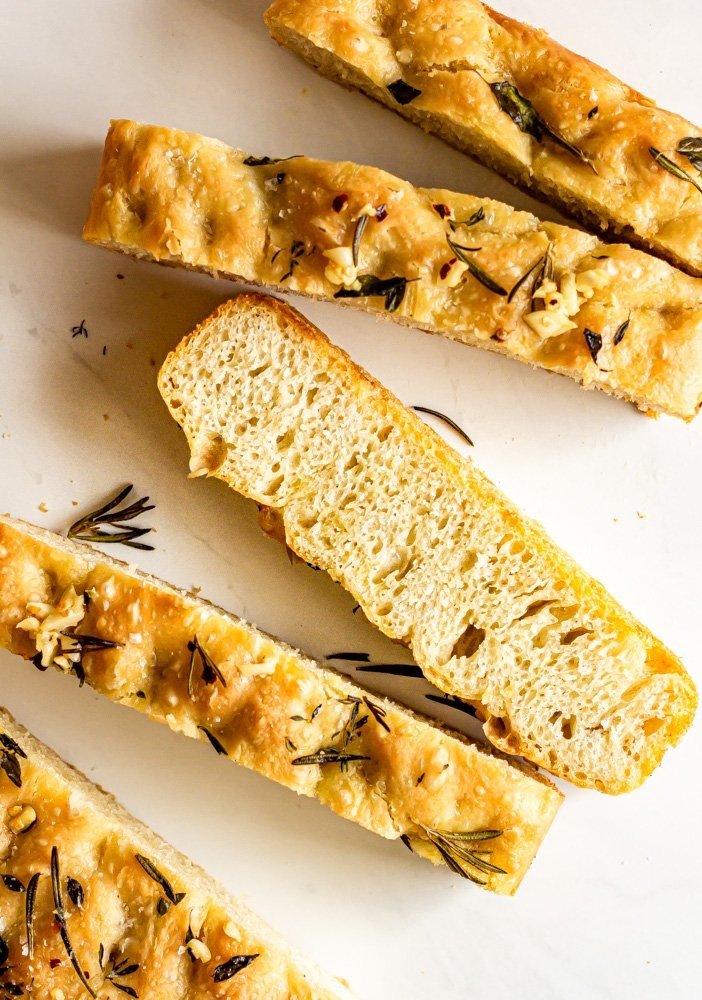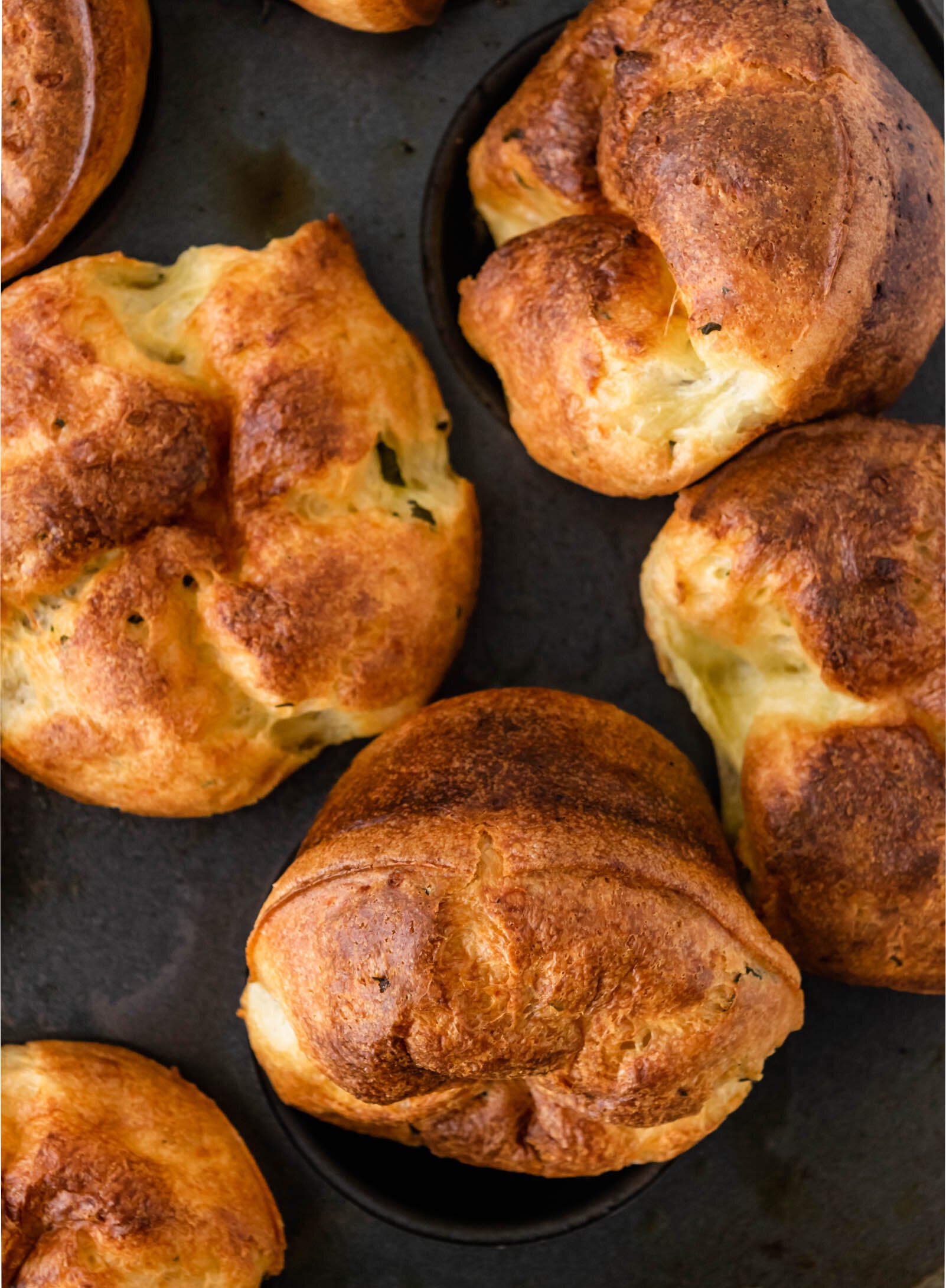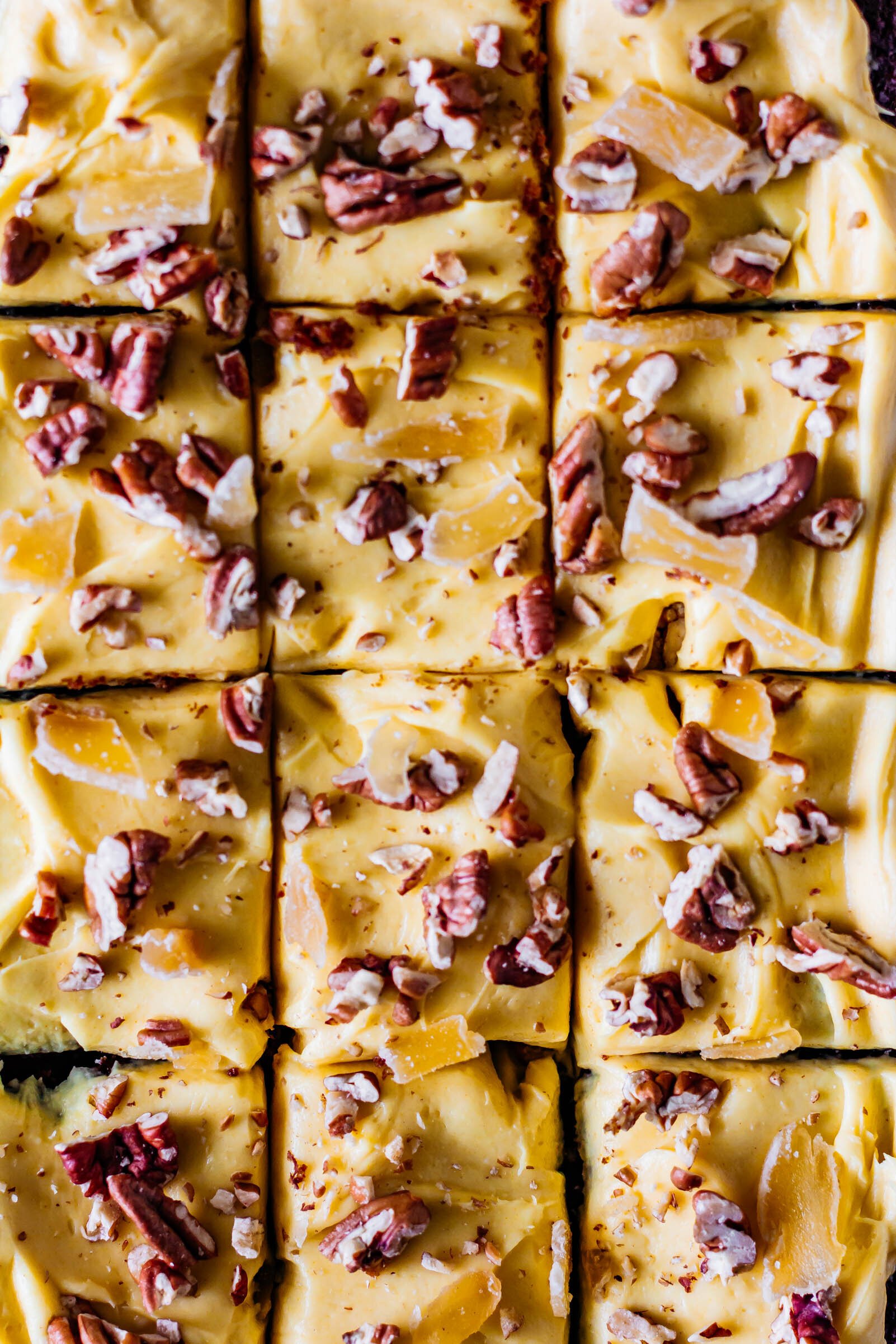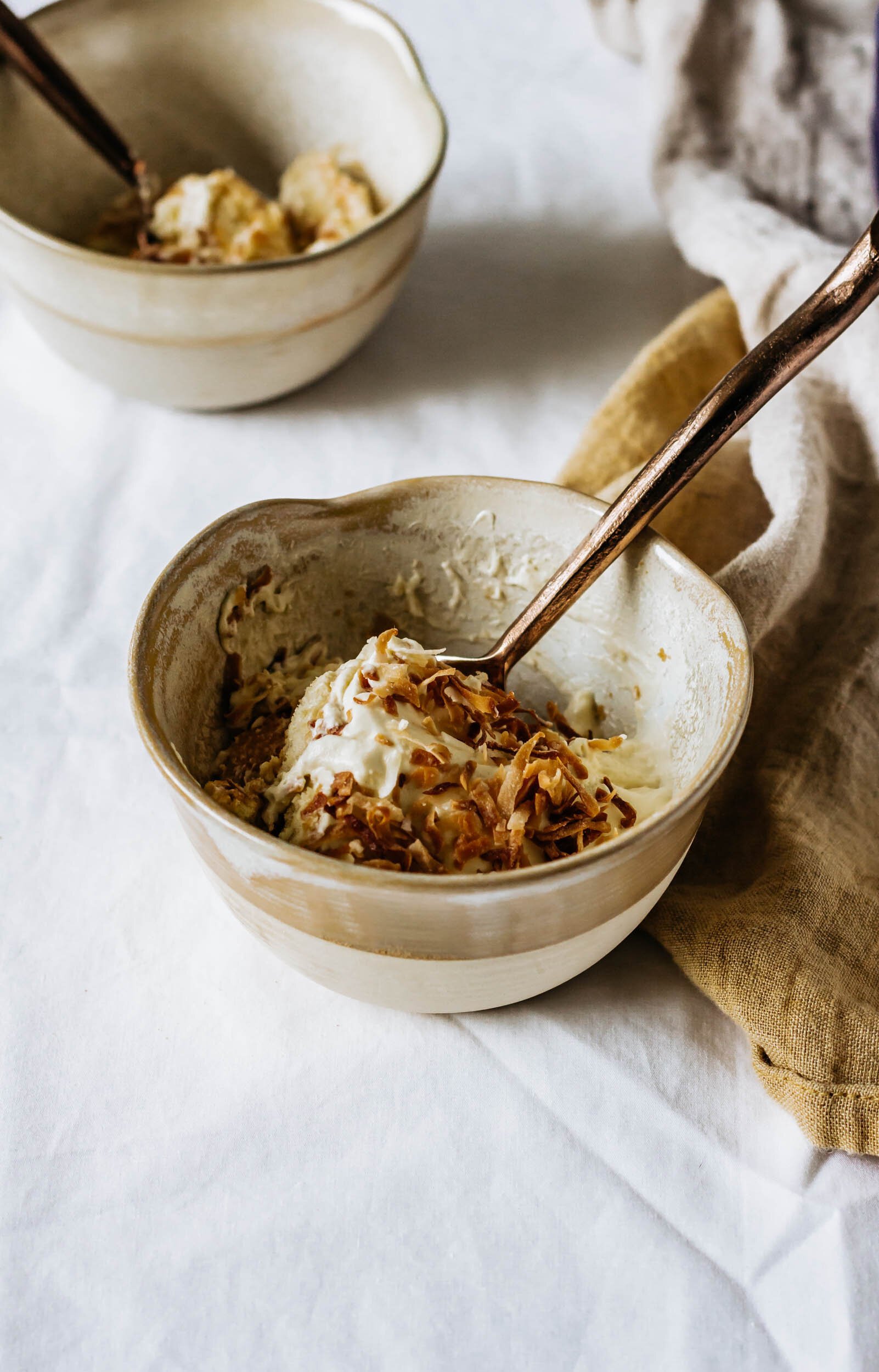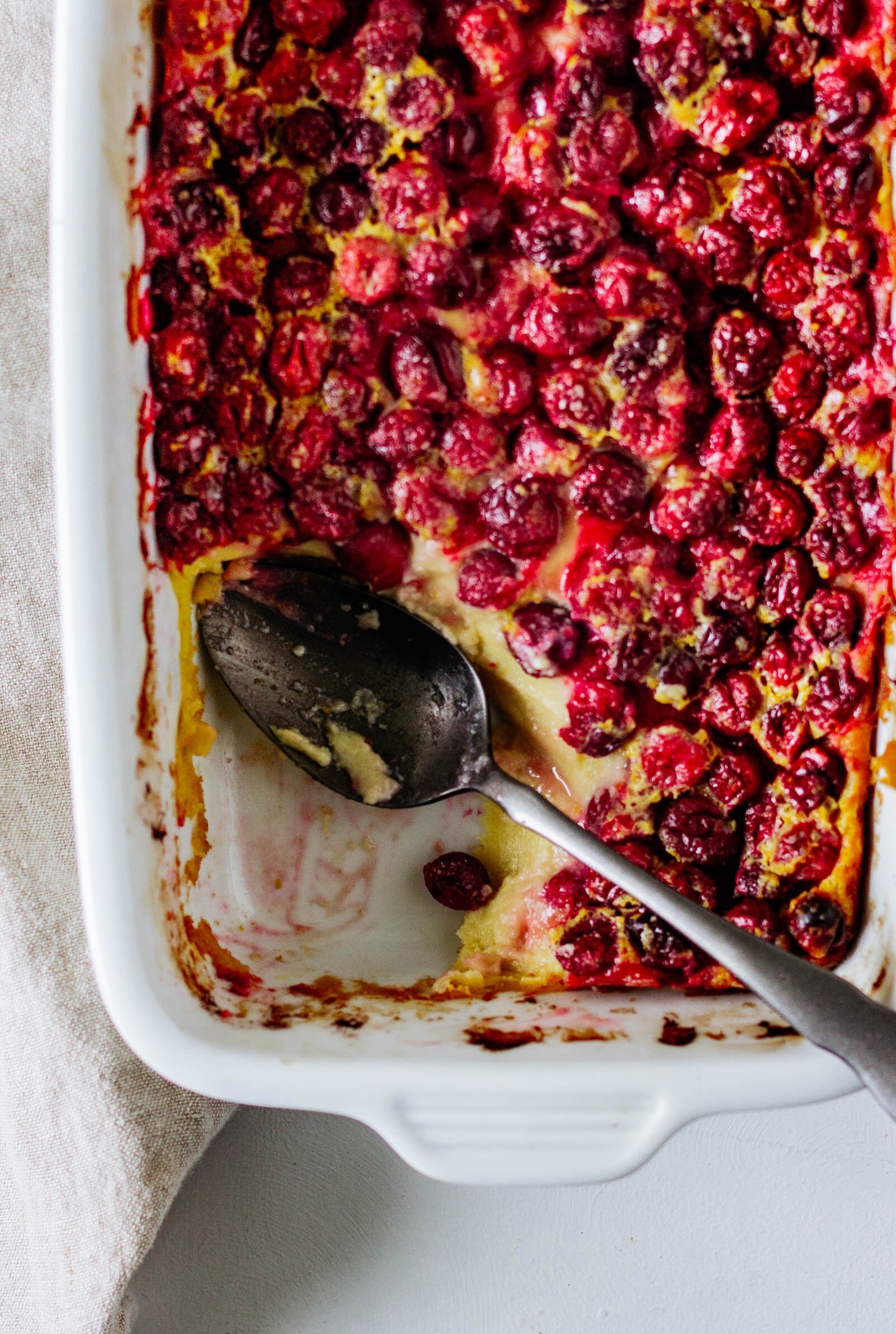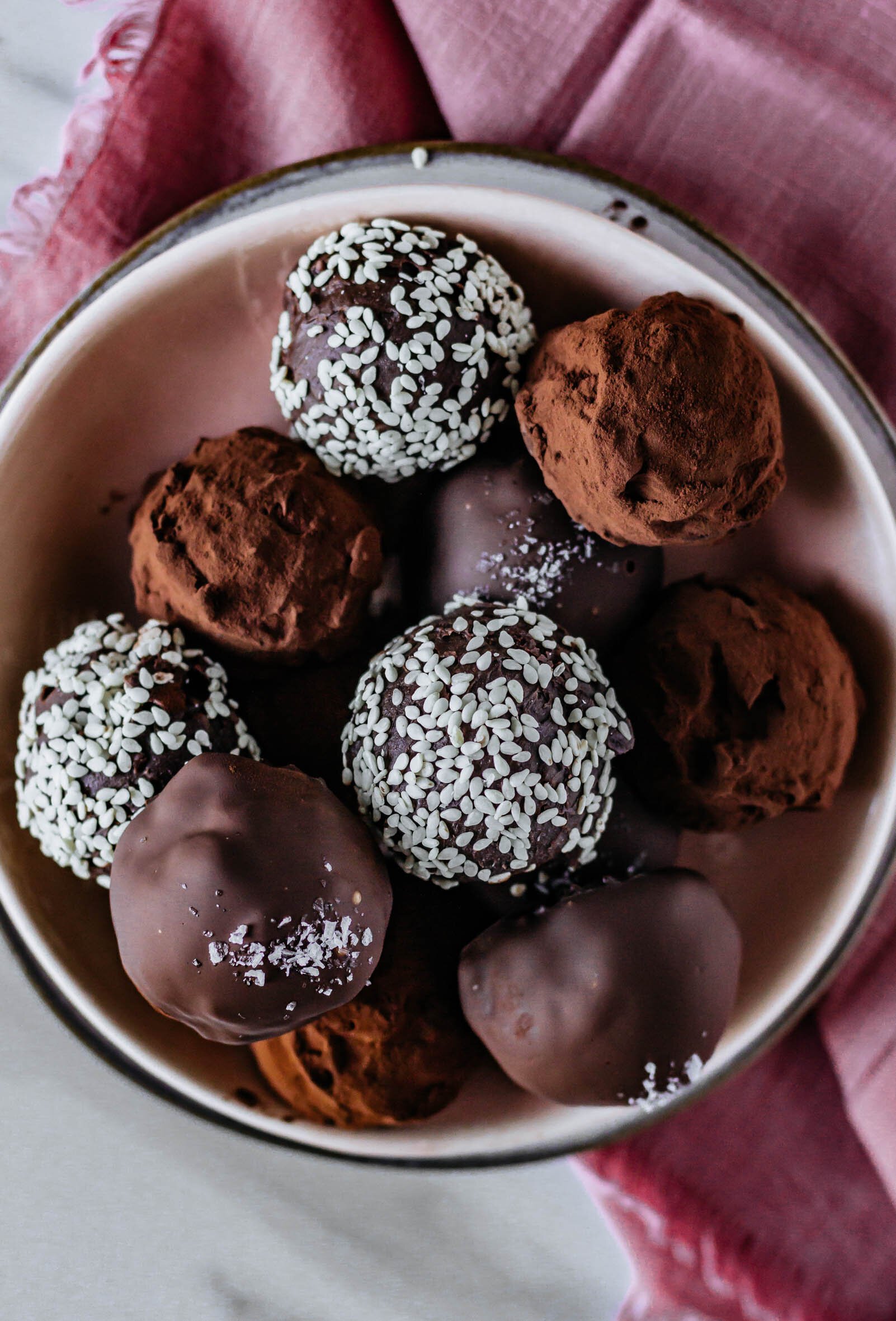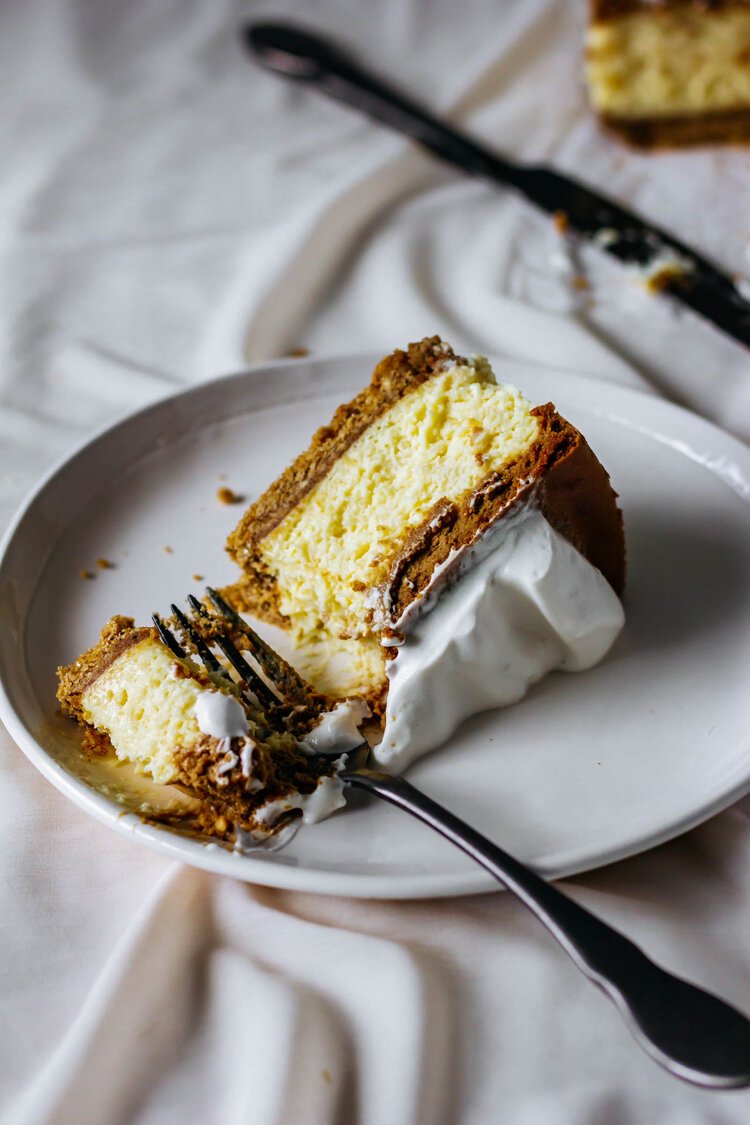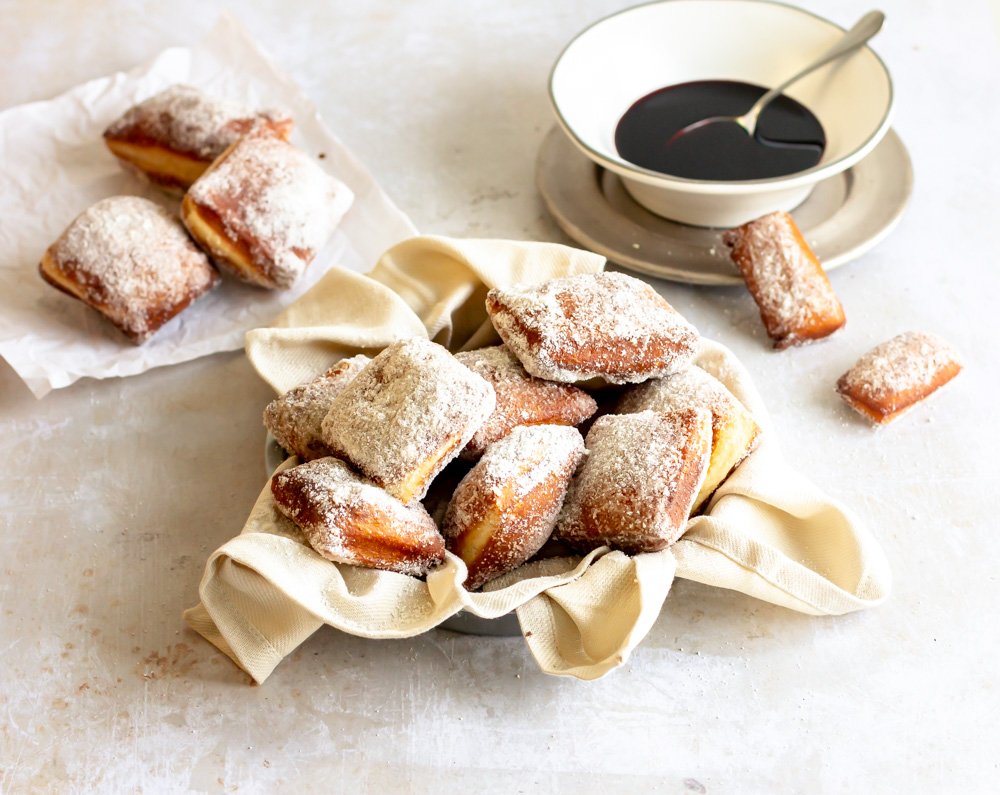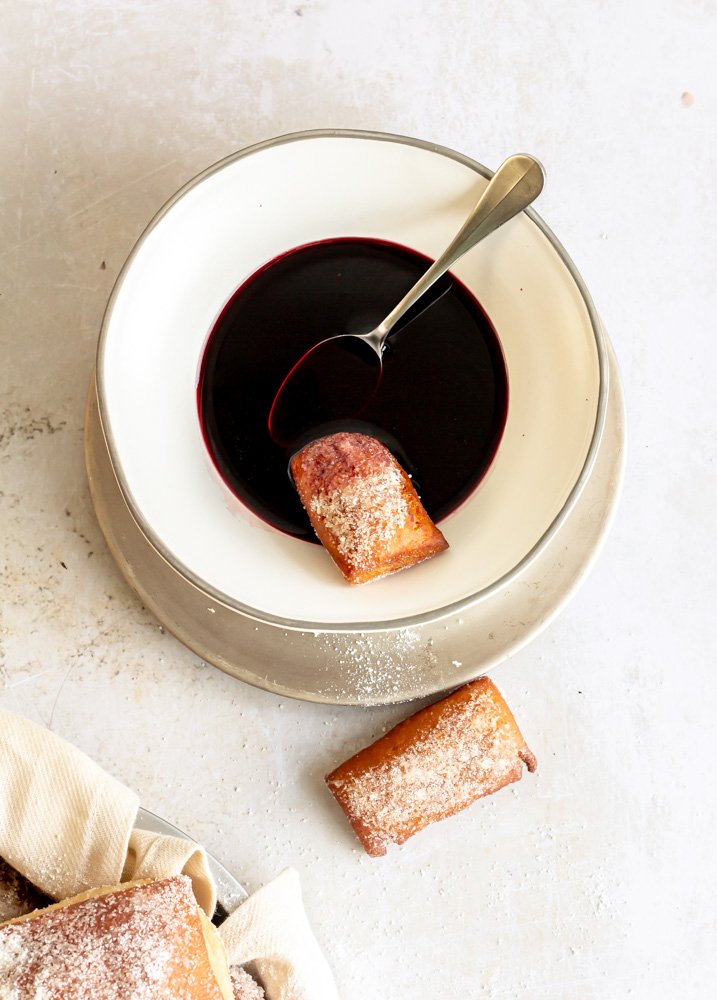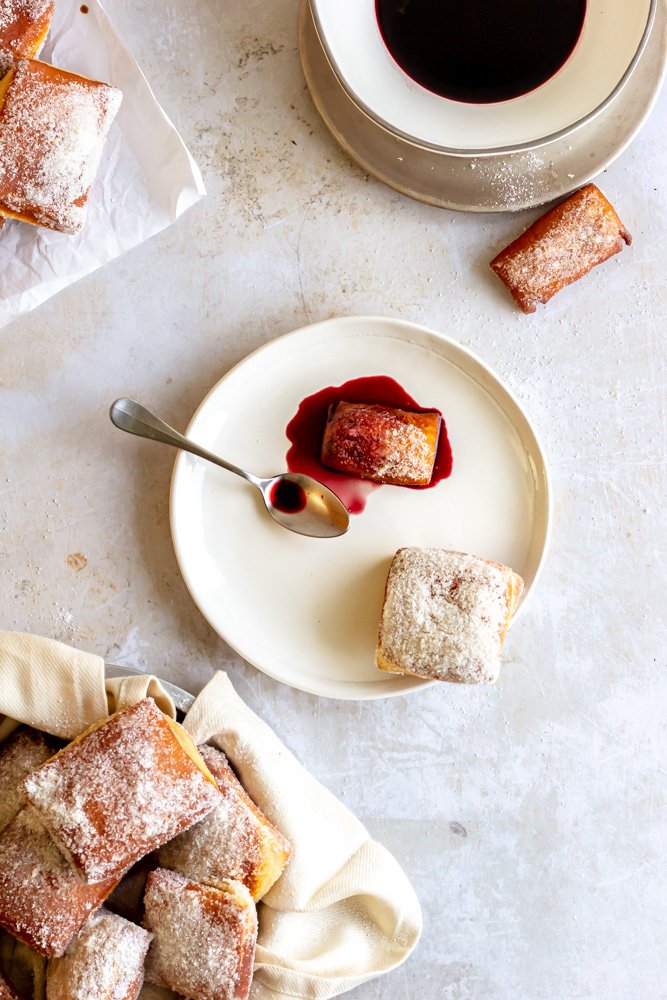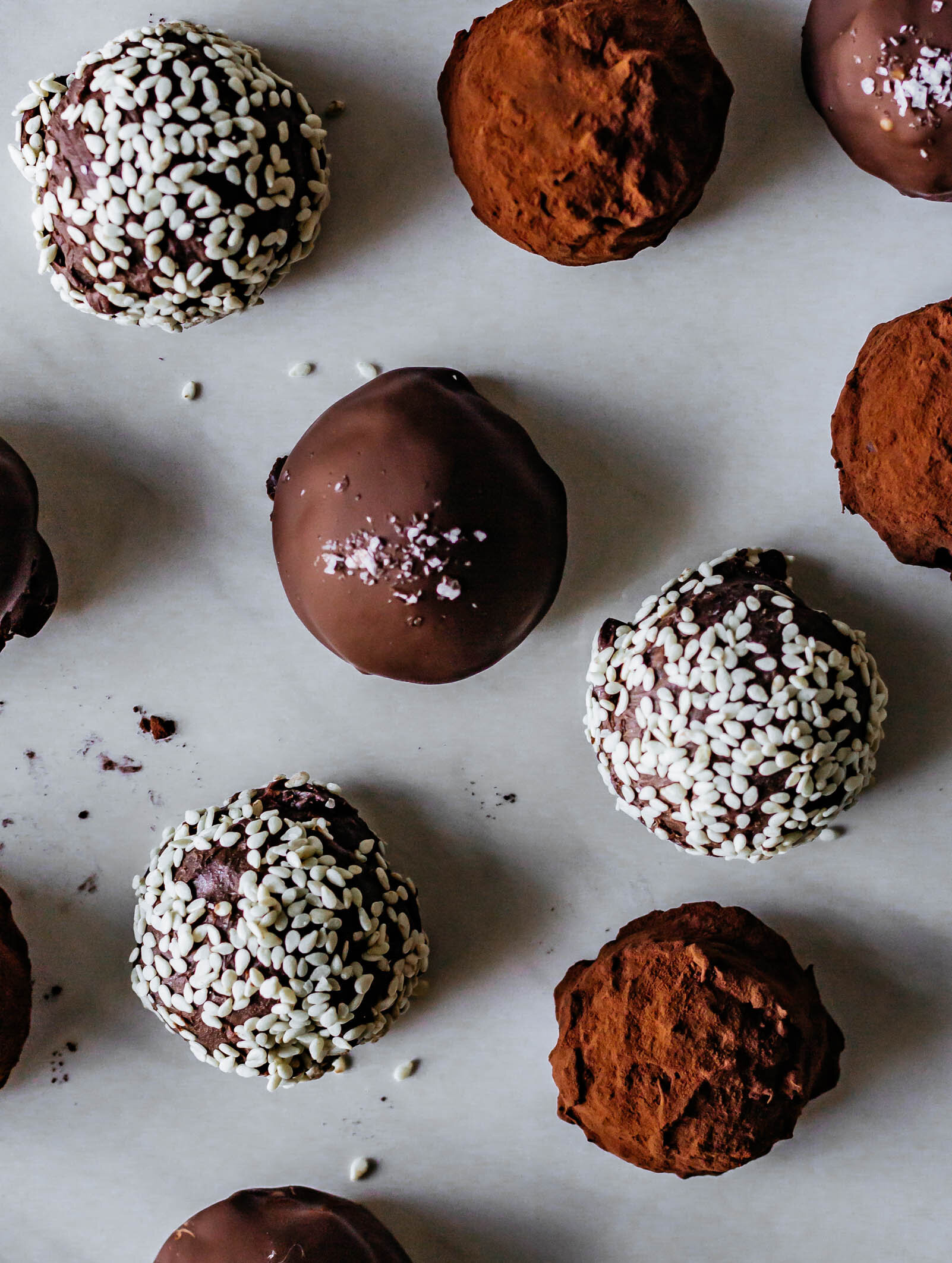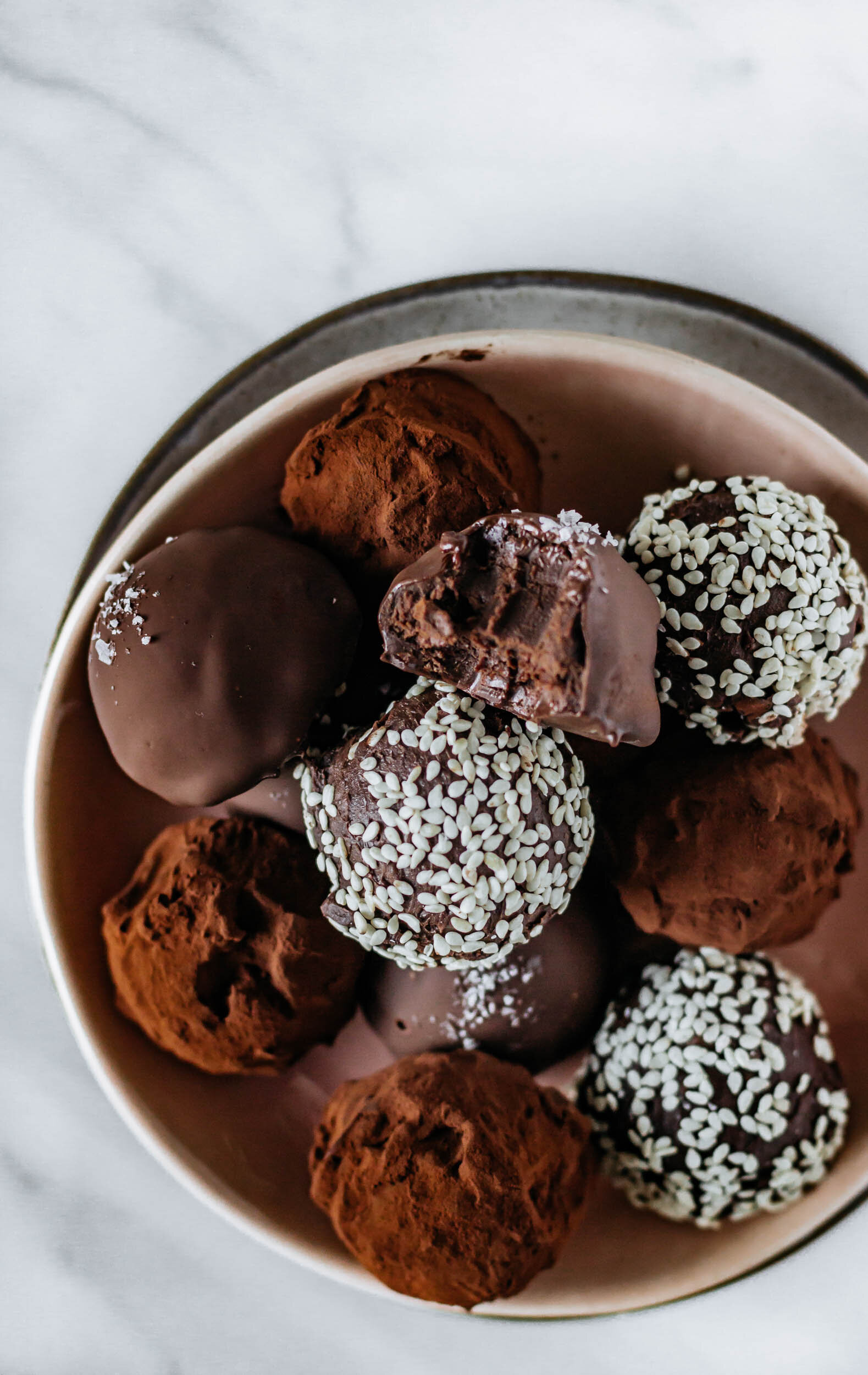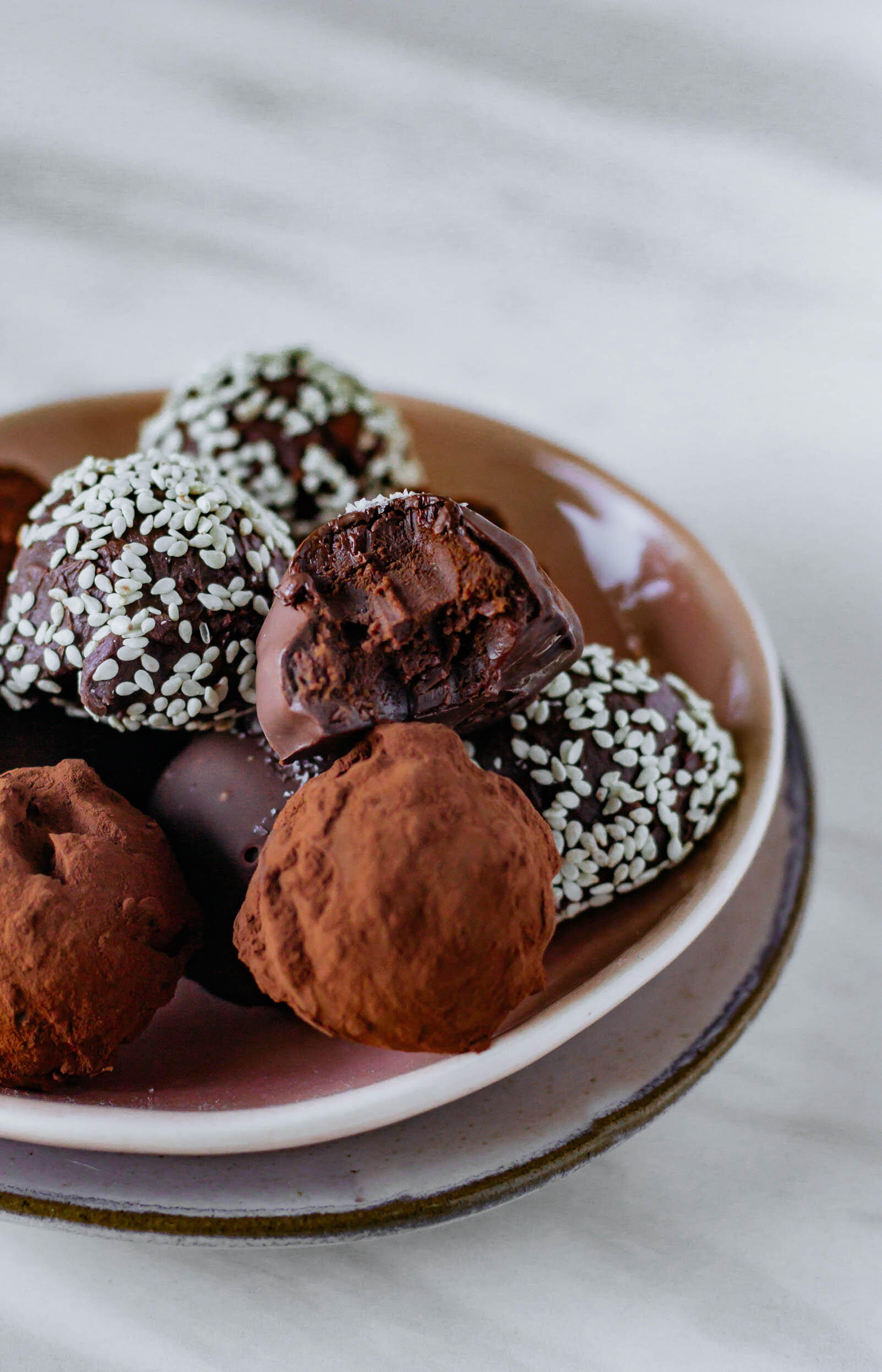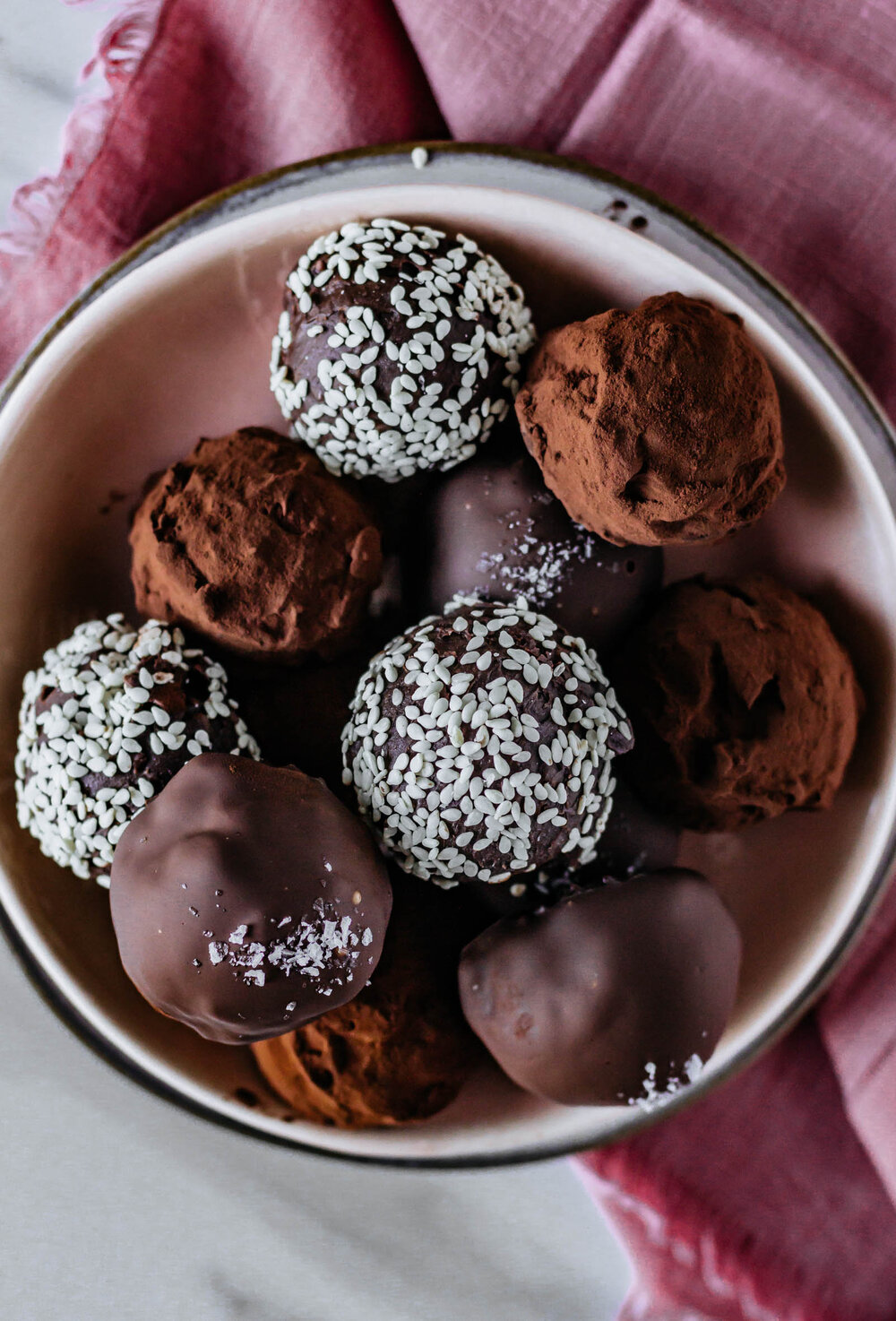how to make buttermilk beignets
Beignets are made with a yeasted, enriched dough in a process very similar to making donuts. Yeast is proofed in liquid and then butter and eggs are added before the dry ingredients. For this recipe, we’re incorporating buttermilk for a little extra tenderness, nutty browned butter and floral cardamom for a spiced holiday vibe.
The dough will undergo a pretty vigorous kneading (a standing mixer is your bff) to create the necessary gluten structure in spite of all of the inhibitors (fat, eggs, and sugar) that will make the finished dough so lush.
After kneading, there’s one bulk proof, shaping, and one more quick rest before frying. Like most doughs, this beignet dough can be cold-proofed to develop flavor and help fit into your schedule a bit better. If you choose to cold proof the dough, simply punch it down after it’s bulk proof and transfer it to the fridge for an overnight rest. In the morning, pull the dough out and let it rest on the counter for about 30 minutes before rolling and shaping and then give the cut beignets another 30-45 minutes rest, until they are puffy, before frying.
Whether you embrace a cold proof or make the beignets all in one go, don’t forget to toss them in sugar right after frying…that’s the very best part. I used a mix of powdered sugar and granulated sugar because I wanted a little bit of crunch from the sugar crystals. As soon as you finish your sugar tossing, eat the beignets warm, dunked in vino cotto for a little Cafe Du Monde-with-a-twist vibe.



